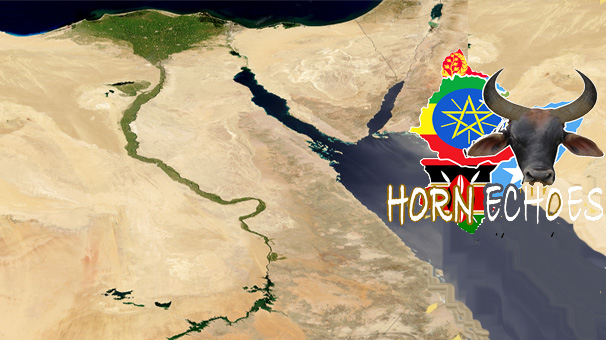The River Remembers: The Silence Between Names (Part III)

Part I of this series began not with certainty, but with sediment, with the idea that memory in postcolonial terrains accumulates not linearly, but rhythmically. The Nile was not only a witness to history; it was an archive of silences. Its current carried the residue of displacement, mourning, and unfinished resistance.
Part II turned its gaze to Tayeb Salih’s “Season of Migration to the North,” not as literary analysis alone, but as a reading of colonial afterlives. We read Mustafa Sa’eed not simply as a character, but as a symptom of mimicry, of erasure, of the seductive violence of being educated in a tongue that never fully lets you speak for yourself. The narrator, this part argued, returns with silence lodged in its throat; Sa’eed is that silence performed, internalized, and ultimately weaponized.
Part III confronts silence directly, not the silence of ignorance, but of inheritance. A silence structured into the way we remember, the way we speak, and, more hauntingly, the way we forget.
The gaze then is toward the silences we inherit and the stories we dare not tell. It asks, what do we pass on when we pass nothing on? And what kind of resistance can be found not only in remembering but in refusing to forget?
The Architecture of Silence
Edward Said taught us that representation is never innocent. In “Orientalism,” he exposed the ways the West produced knowledge about the East as a mechanism of power. To be seen was to be controlled. But what of those not seen at all? What of those who are neither misrepresented nor exoticized but entirely omitted?
This is where silence begins, not just as exclusion, but as epistemic erasure.
In “Silencing the Past,” Michel-Rolph Trouillot stipulates that silences enter the historical process at four critical moments: the making of sources, the creation of archives, the crafting of narratives, and the moment of retrospective significance. What we do not remember is often what power has refused to record.
Gayatri Spivak, in her landmark essay “Can the Subaltern Speak?”, asked us to consider the impossibility of certain voices ever entering the archive without distortion. Even when permitted to speak, the subaltern’s voice is often translated, mediated, or ventriloquized by dominant epistemologies.
Silence, then, is not an absence. It is structured.
It is the wound in the family tree where a revolutionary’s name should be.
It is the absence of a mother tongue in the refugee’s lullaby.
It is the classroom where national history begins only after colonization.
It is the border where memory ends, because documentation never began.
The Silence Assigned to Her
There is a particular burden of silence placed on women in postcolonial narratives. In “Season of Migration to the North,” Hosna Bint Mahmoud does not get a monologue. She gets a consequence. Her refusal of marriage and subsequent death are not incidental; they are narrative symptoms of a society where women’s resistance is rendered unspeakable unless it ends in tragedy.
We must name that for what it is: epistemic gendering.
Audre Lorde’s immortal words state, “Your silence will not protect you.” But what if silence was not a choice? What if it was an inheritance? A legacy passed from mother to daughter, not because of weakness, but because of what the archive refuses to hold?
Saidiya Hartman has written powerfully about the “violence of the archive”: how Black and colonized women are often reduced to the margins, their lives accessible only through the footnotes of state records, criminal trials, or male-authored texts. She calls this the problem of “critical fabulation”: the need to imagine what was never written.
In our own histories, from the Horn of Africa to the diaspora, how many Hosnas have gone unnamed? How many Umm Mahmouds were never asked to speak, even though they remembered everything?
The Linguistic Legacy of Refusal
Ngũgĩ wa Thiong’o warned that to dream in a colonial language is to inherit its metaphors. When the language of grief is not your own, you are forced to translate sorrow. And translation, as Derrida reminds us, is always a form of loss.
To speak in Arabic, in English, in Tigrinya, or in Ge’ez is not just a political act. It is a negotiation with history. A negotiation with the empire. Each tongue carries its scars.
Derrida’s notion of the “trace” is useful here: the idea that meaning is always deferred, always haunted by what is absent. Our languages, too, are haunted. The silence of a lost language is not simply a void; it is a presence that disturbs every word that tries to replace it.
The postcolonial subject is often forced to articulate trauma in borrowed syntax. To speak revolution in the colonizer’s tongue. To mourn in a language that cannot name the dead correctly.
What kind of resistance, then, is found not only in remembering but in refusing to forget—even when language fails?
The River as Witness, Again
The Nile does not archive like museums do. It holds memory in motion. It forgets nothing, only lets things settle until stirred.
This is why the metaphor persists: not just as a symbol, but as epistemology. The river reminds us that silence is not the end of the story. It is part of its current.
So what do we pass on when we pass nothing on?
We pass the silence of vanished names.
We pass the trauma of unspoken betrayals.
We pass the hesitations in our mother’s voice when she tells us about the war.
We pass the silence between verses in the prayer.
We pass the grammar of refusal from generation to generation.
This, too, is resistance.
To carry silence consciously is to interrogate what it omits and why. It is a form of narrative defiance. A refusal to let the archive be the final word. A challenge to history’s convenience.
What Comes After Silence?
Part III closes not with answers, but with further questions. What if we begin to write not only from memory but from its fractures, its fissures, its absences, and its refusals? What if we take silence not as absence, but as a site of something to be mapped, inhabited, and disturbed?
In the next part of this series, we will turn toward what fills the silence: song, orality, fragments, and resistance-in-translation. We will ask what it means to speak with a voice formed in silence and what new grammars emerge when we no longer rely on inherited tongues alone.
“From the eye that remembers to the I still learning to see.” Beyan Negash



Awate Forum